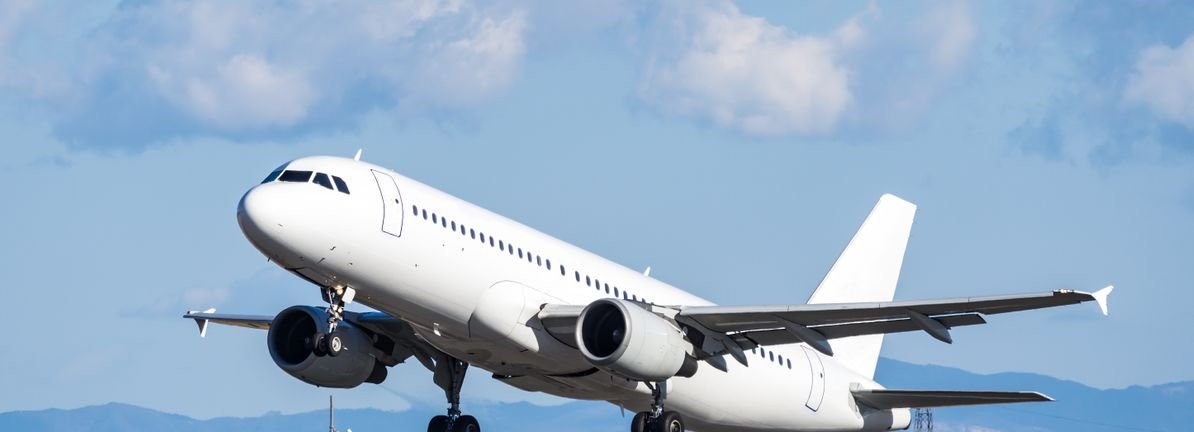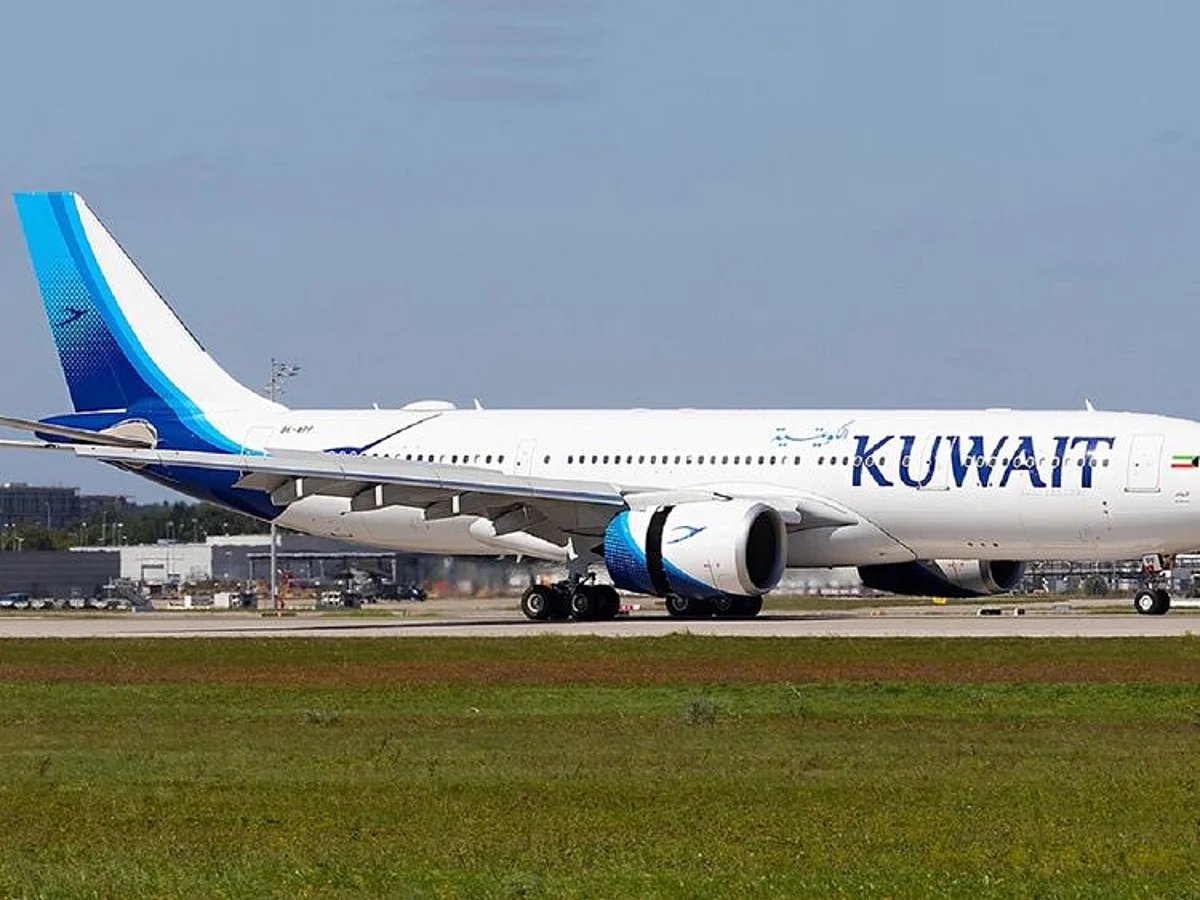Flight Buzz
U.S.-Mexico Aviation Tensions and the Reconfiguration of Cross-Border Airline Partnerships: A Strategic Investment Analysis

The U.S.-Mexico aviation landscape has entered a period of profound transformation. Regulatory shifts, geopolitical tensions, and the unraveling of long-standing airline partnerships—most notably the Delta-Aeroméxico joint venture—have created a volatile environment for investors. As the U.S. Department of Transportation (DOT) enforces stricter oversight of cross-border operations, airlines and investors must navigate a complex web of risks and opportunities.
Regulatory Shifts and the Fragmentation of Joint Ventures
The DOT’s 2023 decision to revoke antitrust immunity for the Delta-Aeroméxico partnership marked a turning point. Citing Mexico’s airport capacity restrictions—particularly the forced relocation of cargo operations from Mexico City International Airport (MEX) to the underdeveloped Felipe Ángeles International Airport (NLU)—the U.S. government argued that these actions violated the 2015 U.S.-Mexico Air Transport Agreement. This move, aligned with the Trump administration’s “America First” agenda, has forced the joint venture into a wind-down by October 2024, fragmenting a once-integrated transborder network.
For Delta Air Lines (DAL), the loss of Aeroméxico’s 15% stake in Volaris—a key regional competitor—has complicated its dominance in the Mexican market. Meanwhile, Aeroméxico (AEROMEX.MX) faces a dual challenge: diminished U.S. connectivity and rising competition from low-cost carriers like Volaris and VivaAerobus. The airline’s 30-day stock win rate of 42.86% in 2025 reflects market uncertainty, though historical data suggests potential for recovery.
Financial Implications and Currency Volatility
The Mexican peso’s depreciation against the U.S. dollar has exacerbated financial risks for both airlines. Delta’s 2025 quarterly report shows resilience, with $16.6 billion in operating revenue and a 12.6% operating margin, but its long-term exposure to currency fluctuations remains a concern. Aeroméxico, which relies on U.S.-sourced aircraft parts and crew expenses, has seen costs rise by 15–20% since 2023.
Volaris, meanwhile, has capitalized on the shifting dynamics. The low-cost carrier transported 10.77 million passengers in the first half of 2025—a 8.2% year-over-year increase—by expanding its route network and leveraging Aeroméxico’s weakened U.S. connectivity. For investors, Volaris’ 3.1% international passenger growth underscores its potential as a long-term play.
Geopolitical Risks and Strategic Realignment
The U.S.-Mexico trade tensions of 2025 have escalated beyond aviation. The reinstatement of a 17% tariff on Mexican fresh tomatoes in July 2025 and the looming threat of a 30% tariff on all Mexican imports by August 1 have created a toxic mix of uncertainty. For airlines, the ripple effects include supply chain disruptions and regulatory instability. The U.S. tariffs on steel and aluminum, while not directly targeting aircraft, indirectly raise production costs for manufacturers like Boeing and Embraer, affecting carriers reliant on U.S. suppliers.
Aeroméxico has responded by sourcing aircraft parts from non-U.S. suppliers and exploring Mexico’s aerospace sector for maintenance, repair, and overhaul (MRO) services. This strategic shift could reduce reliance on U.S. facilities and mitigate tariff-related penalties. Delta, in contrast, has focused on diversifying its route network and hedging 60% of its fuel needs to offset rising costs.
The Mexican government’s potential retaliatory measures under the USMCA framework—ranging from tariffs on U.S. aviation services to stricter airport capacity controls—add another layer of complexity. Investors must monitor these developments closely, as they could trigger a sell-off in airlines with heavy cross-border exposure.
Market Projections and Investment Strategies
The Mexican aviation market, valued at $7.96 billion in 2024, is projected to grow at a CAGR of 4.60% through 2034, reaching $12.48 billion by 2034. This growth is driven by the expansion of low-cost carriers, the recovery of international travel, and the FAA’s reinstatement of Mexico’s Category 1 air safety status in 2025.
For investors, the path forward lies in adaptability. Airlines with diversified networks, strong balance sheets, and proactive hedging strategies are better positioned to navigate volatility. Delta’s 2025 guidance of $5.25–$6.25 in EPS, coupled with a 25% dividend increase, signals confidence in its long-term trajectory. Aeroméxico’s efforts to expand into Central America and the Caribbean could unlock new revenue streams, but its stock remains a higher-risk bet.
Conclusion: Resilience Over Dominance
The U.S.-Mexico aviation crisis is a microcosm of the broader clash between geopolitical interests and globalized commerce. For airlines, the dissolution of joint ventures and regulatory scrutiny demand a recalibration of strategies. For investors, the key takeaway is clear: resilience—rather than dominance—will define the winners in this high-stakes environment.
As the aviation sector adapts to a more fragmented and protectionist landscape, those who prioritize diversification, liquidity, and strategic realignment will emerge stronger. The August 1 tariff deadline and the DOT’s final ruling on antitrust immunity by October 2025 are critical junctures to monitor. In an era of geopolitical brinkmanship, adaptability is not just an advantage—it is a necessity.
Flight Buzz
Kuwait, India expand aviation pact, increasing weekly seat capacity to 18,000 – Gulf News
Flight Buzz
CAPA’s ‘strike’ articles count is not rising with airline profits. Labour remains cautious

Analysis
The confidence of aviation labour organisations to claim a greater share of industry profits when margins rise appears to be lower than it was before the COVID-19 crisis.
Historically, the number of news articles on the CAPA – Centre for Aviation website mentioning the word ‘strike’ has broadly followed the rise and fall of airline industry operating profit margins.
However, the number of CAPA – Centre for Aviation ‘strike’ articles has not increased in line with margins in the aftermath of the COVID-19 pandemic.
Moreover, in spite of IATA‘s forecast of a slight margin improvement in 2025, the number of articles halved in 1H2025 versus the same period of last year 2024.
Read More
This CAPA Analysis Report is 1,278 words.
You must log in to read the rest of this article.
Got an account? Log In
Create a CAPA Account
Get a taste of our expert analysis and research publications by signing up to CAPA Content Lite for free, or unlock full access with CAPA Membership.
| Inclusions | Content Lite User | CAPA Member |
|---|---|---|
| News | ||
| Non-Premium Analysis | ||
| Premium Analysis | ||
| Data Centre | ||
| Selected Research Publications |
Flight Buzz
Returns At InterGlobe Aviation (NSE:INDIGO) Are On The Way Up

Did you know there are some financial metrics that can provide clues of a potential multi-bagger? One common approach is to try and find a company with returns on capital employed (ROCE) that are increasing, in conjunction with a growing amount of capital employed. If you see this, it typically means it’s a company with a great business model and plenty of profitable reinvestment opportunities. So when we looked at InterGlobe Aviation (NSE:INDIGO) and its trend of ROCE, we really liked what we saw.
Understanding Return On Capital Employed (ROCE)
For those who don’t know, ROCE is a measure of a company’s yearly pre-tax profit (its return), relative to the capital employed in the business. Analysts use this formula to calculate it for InterGlobe Aviation:
Return on Capital Employed = Earnings Before Interest and Tax (EBIT) ÷ (Total Assets – Current Liabilities)
0.13 = ₹110b ÷ (₹1.2t – ₹342b) (Based on the trailing twelve months to March 2025).
So, InterGlobe Aviation has an ROCE of 13%. On its own, that’s a standard return, however it’s much better than the 8.4% generated by the Airlines industry.
View our latest analysis for InterGlobe Aviation
In the above chart we have measured InterGlobe Aviation’s prior ROCE against its prior performance, but the future is arguably more important. If you’d like, you can check out the forecasts from the analysts covering InterGlobe Aviation for free.
What Does the ROCE Trend For InterGlobe Aviation Tell Us?
We like the trends that we’re seeing from InterGlobe Aviation. The data shows that returns on capital have increased substantially over the last five years to 13%. The amount of capital employed has increased too, by 218%. This can indicate that there’s plenty of opportunities to invest capital internally and at ever higher rates, a combination that’s common among multi-baggers.
What We Can Learn From InterGlobe Aviation’s ROCE
To sum it up, InterGlobe Aviation has proven it can reinvest in the business and generate higher returns on that capital employed, which is terrific. And a remarkable 518% total return over the last five years tells us that investors are expecting more good things to come in the future. In light of that, we think it’s worth looking further into this stock because if InterGlobe Aviation can keep these trends up, it could have a bright future ahead.
On the other side of ROCE, we have to consider valuation. That’s why we have a FREE intrinsic value estimation for INDIGO on our platform that is definitely worth checking out.
While InterGlobe Aviation may not currently earn the highest returns, we’ve compiled a list of companies that currently earn more than 25% return on equity. Check out this free list here.
New: AI Stock Screener & Alerts
Our new AI Stock Screener scans the market every day to uncover opportunities.
• Dividend Powerhouses (3%+ Yield)
• Undervalued Small Caps with Insider Buying
• High growth Tech and AI Companies
Or build your own from over 50 metrics.
Have feedback on this article? Concerned about the content? Get in touch with us directly. Alternatively, email editorial-team (at) simplywallst.com.
This article by Simply Wall St is general in nature. We provide commentary based on historical data and analyst forecasts only using an unbiased methodology and our articles are not intended to be financial advice. It does not constitute a recommendation to buy or sell any stock, and does not take account of your objectives, or your financial situation. We aim to bring you long-term focused analysis driven by fundamental data. Note that our analysis may not factor in the latest price-sensitive company announcements or qualitative material. Simply Wall St has no position in any stocks mentioned.
-

 Mergers & Acquisitions1 week ago
Mergers & Acquisitions1 week agoAmazon weighs further investment in Anthropic to deepen AI alliance
-

 Mergers & Acquisitions1 week ago
Mergers & Acquisitions1 week agoHow Elon Musk’s rogue Grok chatbot became a cautionary AI tale
-

 Brand Stories2 weeks ago
Brand Stories2 weeks agoVoice AI Startup ElevenLabs Plans to Add Hubs Around the World
-

 Mergers & Acquisitions2 weeks ago
Mergers & Acquisitions2 weeks agoUK crime agency arrests 4 people over cyber attacks on retailers
-

 Asia Travel Pulse2 weeks ago
Asia Travel Pulse2 weeks agoLooking For Adventure In Asia? Here Are 7 Epic Destinations You Need To Experience At Least Once – Zee News
-

 AI in Travel2 weeks ago
AI in Travel2 weeks ago‘Will AI take my job?’ A trip to a Beijing fortune-telling bar to see what lies ahead | China
-

 Mergers & Acquisitions2 weeks ago
Mergers & Acquisitions2 weeks agoEU pushes ahead with AI code of practice
-

 Mergers & Acquisitions2 weeks ago
Mergers & Acquisitions2 weeks agoChatGPT — the last of the great romantics
-

 The Travel Revolution of Our Era1 month ago
The Travel Revolution of Our Era1 month agoCheQin.ai Redefines Hotel Booking with Zero-Commission Model
-

 Mergers & Acquisitions2 weeks ago
Mergers & Acquisitions2 weeks agoHumans must remain at the heart of the AI story


You must be logged in to post a comment Login